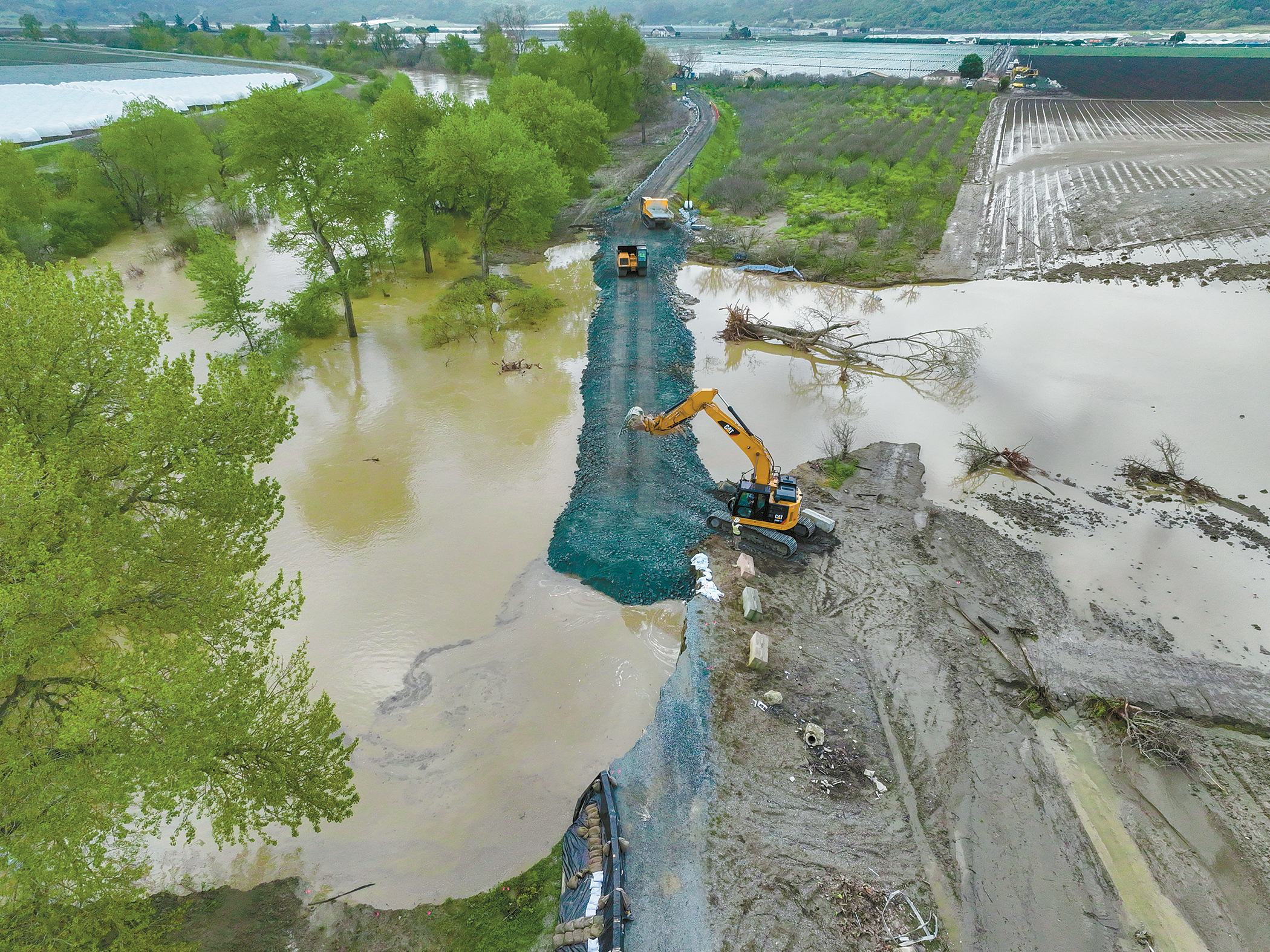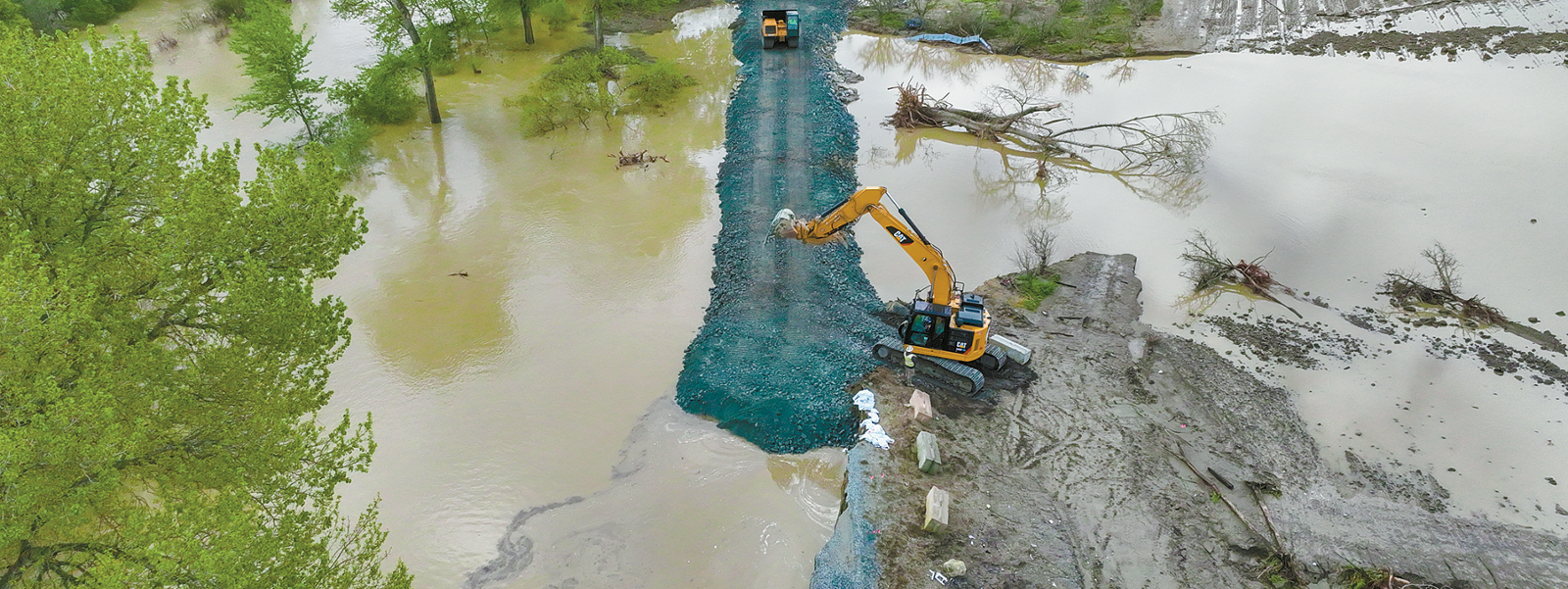Commentary: As farmers endure disasters, relief is slow in coming

Emergency crews pile rock to close a levee break after floodwaters overflowed the Pajaro River in Monterey County in March 2023 as storms caused massive property and crop losses for farmers.
Photo/California Department of Water Resources


By Matthew Viohl
Catastrophic weather events wreaked havoc on U.S. agriculture last year, causing nearly $22 billion in crop and rangeland losses, according to the American Farm Bureau Federation. California accounted for $1.14 billion of that figure, including nearly $880 million in damages from severe storms and flooding.
The figures represent a significant shift from previous years, when drought and wildfires were California’s biggest challenges. Since then, atmospheric rivers, Tropical Storm Hilary and other weather events battered our farming communities.
Disasters are certainly nothing new for California farmers and ranchers, but the ways in which producers are protected have changed. Despite crop insurance and other loss recovery programs in place at the U.S. Department of Agriculture, the prevalence of specialty crops and the historical impacts of fire and drought have made insuring our resources challenging.
Of roughly 400 different commodities produced in California, less than a quarter are covered by a direct federal crop insurance program. When a wildfire or flood happens, uninsured producers are often left relying on ad hoc disaster programs, which are typically unreliable and slow to issue payments.
Previously, farmers in the West could rely on the Wildfire and Hurricane Indemnity Program Plus, or the WHIP+ disaster relief program. In late 2021, the California Farm Bureau worked to secure congressional approval of $10 billion for disaster payments for 2020 and 2021.
Unfortunately, it took some six months for USDA to make an official announcement on how those funds would be distributed. Ultimately, WHIP+ was altered to become the Emergency Relief Program, which divided payments for producers into two phases.
Phase one payments covered crop losses for producers that were already in the system via pre-existing crop insurance enrollments and other markers, while phase two payments covered everyone else. The problem? With so many California producers unable to even use crop insurance due to lack of coverage, many were stuck waiting for the more complicated phase two process.
The latter phase did not open applications until Jan. 23, 2023, with payments for 2020 and 2021 events slowly trickling out throughout much of the year. In some cases, farmers and ranchers did not receive payments until more than three years after the disaster impacts.
Last year, I received a call about an ERP payment that could not be received by a particular farm because it had gone out of business while awaiting assistance. While I don’t know if the ERP payments would have helped the farm maintain solvency, the very nature of a disaster assistance program should be one that assists farmers and ranchers as quickly as possible to avoid risk of financial ruin.
As it stands, the ERP program is neither quick nor reliable. In addition, it now faces a significant funding shortfall, with projected financial impacts far exceeding the budgetary capacity to cover losses experienced by U.S. agricultural producers in 2022 and 2023. This underfunding has led the agency to alter the payment calculations for producers, meaning less money in their pockets.
Ever since the creation of the ERP program, the California Farm Bureau has dedicated significant time working with local, state and national partners trying to navigate the USDA’s various recovery programs to improve distribution of payments. This has included advocating in Washington, D.C., for additional funds and a more efficient, easier-to-understand system for those seeking disaster relief.
Natural disasters remain a constant threat to communities around the country, as we were reminded last month, when the second-largest wildfire event in U.S. history scorched more than 1.1 million acres, devouring Texas Panhandle ranchlands and killing more than 7,000 cattle.
As these events continue to impact agricultural lands and producers, it is important for USDA to fulfill its mission of safeguarding the farms and ranches that deliver our food supply.
As we often say, food security is national security. It is difficult to envision how a three-year wait for federal disaster assistance constitutes food security. But we continue to push federal and legislative offices for solutions to shrink these unacceptable delays.
Notably, several California members of Congress joined in a letter calling for a lasting solution in the upcoming farm bill. But disaster funding remains a tricky subject in our nation’s capital.
Farm bill legislation might finally be on the docket after the Easter recess, so it may soon become clearer on how realistic such a push might be. Whether through the farm bill or other means, we must continue to implore USDA and federal lawmakers to eliminate the inefficiencies, red tape and underfunding plaguing our disaster recovery programs.
(Matthew Viohl is director of federal policy for the California Farm Bureau. He may be contacted at mviohl@cfbf.com.)




